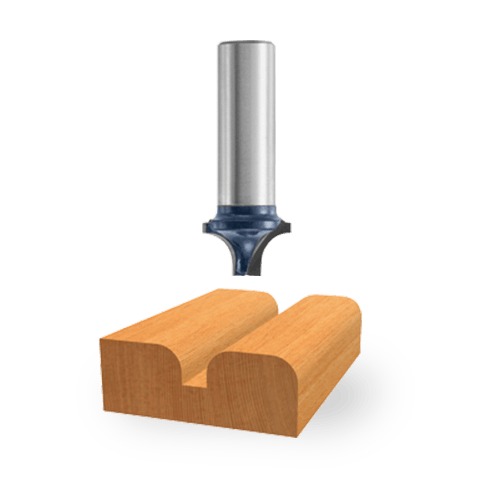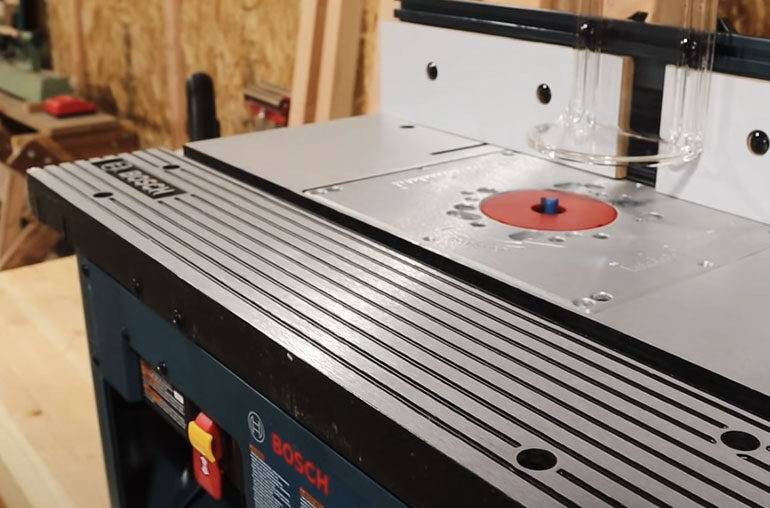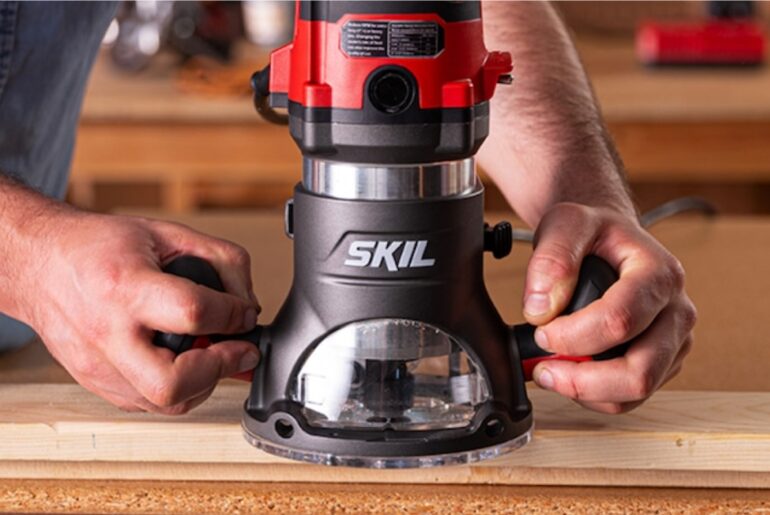Last Updated on August 6, 2022 by James Walton
Router blades considered the most versatile portable tool you can carry in your pocket. With its help, you can cut anything from a square groove in a single pass to a complicated edge treatment. Moreover, router bit is particularly popular to them who are good at cutting and edging interiors. Especially you can do so many decorative works using a single router blade. Including cutting a variety of woodworking joints, you can trim laminates and veneers, shape decorative edges and rout hinge mortises etc.
Further, there are different types of shapes and sizes routers are available in the market. There are also many heavy-duty models for professionals’ carpenters and handheld routers for casual hobby woodworkers. Further, the key point of this router is the bit. Surprisingly the bits do all the work for a router. That’s why before buying a router the first ask question arises which are the perfect bit for that specific one. Another key point is with specialty bits of router you can do few types of cutting or edging task that is nearly impossible accomplished by another type of woodworking tools except best wood router.

Different Types of Router Bits
At first, to be expert in using router blades, you have to try different types of router bits one after one. If you start trying, you’ll find an almost endless variety of router bits there. For example, you can start with the simple common types of bits as I showed below-
Flush Trim Router
This type of router blades used to make the edge of one material flush with another. If you want, you can also trim any corner, joints, and edges using this flush trim router. In brief, you can connect two or more material flush’s edges with its help. Initially, the need of using this bit is to create several identical pieces. There is a bearing installed primarily on the base or tip of this router. Further, the pilots provide proper guidance on how to use and store these bits effectively.
Rounding Over Bit
With its help, you can shape the edges of chair arms, shelves, and tabletops where you would like to round over a sharp edge. Here the round over bit comes with a ball bearing pilot. Thus, it helps to control the width of the cut. To bring out the best result adjust the base to control the cutting depth.
Rabbeting Router Bits
This type of router blades featured wonderful spinning pilot for guiding purposes. Specifically, the name refers itself it works on rabbits. For cutting the rabbets this type of router, bits are very popular. Further, the rabbeting bits work joining different pieces together. Namely, these bits are able to produce rabbits of many different sizes.
Other Types of Router Bits
There are also joinery bits, stile and rail bits, chamfer bits, straight bits and edge forming router bits available there. You can join two separate materials together, the project involving panel doors or framework and cut shapes and angles on the edge of materials respectively with their help.
Straight blade vs Combination blade
When it comes to woodworking routers, the straight blade or combination blade is the most popular type. However, there are pros and cons to both types of blades, so it’s important to know which one is best for your project. Here are a few key differences between these two types of blades:
- Straight Blade: A straight blade is perfect for precise woodworking as its precision teeth make cuts that are in line with each other. The drawback is that straight blades can be more difficult to control because of their focused cutting action.
- Combination Blade: A combination blade has both straight and curved teeth, which makes it a versatile tool for many tasks. The curved teeth help you make curves in your wood, while the straight teeth provide precision cuts.
Are all one blade blades the same
Do all one-bladed woodworking routers use the same blade? It depends. You should choose a blade for your router according to the type of work you want to do, the size of the job, and the router’s speed.
Some woodworking router blades are made for small projects and smaller than blades made for large projects. If you’re using an even smaller piece of wood or want to use your saw at a slower pace, then a smaller blade may be better suited for your needs.
On the other hand, if you are routing large pieces of wood or want to use a higher speed on your machine, a larger blade may be better suited for your needs. It is also essential to consider the type of material that you will be routing.
Our Final Verdict
Router blades come in various types and prices, so doing your homework before buying one is essential. If you’re looking for the best value, you should purchase a used blade. However, if you want the latest and greatest technology, you should buy a new one. In addition, router blades come in both fixed and flexible configurations, so be sure you select the right one for your needs.



